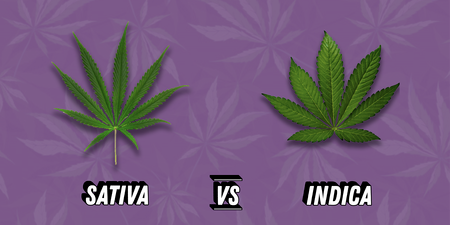
Sativa vs. Indica
When browsing or purchasing cannabis, you might notice that the strains are often broken up into two major types: sativa and indica. You can also find hybrid strains that are a balance of the two. Once you've decided on what paraphernalia you're using - vapes like the Storz & Bickle vaporisers, bongs, hookahs, pipes or papers - you can then pick your poison. Sounds easy, right? But hang on, what if we were to tell you that it's not as simple as that? Although there are notable differences between the two cannabis plants, there is scientific research to suggest that it's not as clear cut as picking between these two major strains. We're going to take a look at the profiles of the sativa and indica plants to give you a jumping off point to further your own research and experimenting.
Sativa
The Cannabis sativa plant is found primarily in warmer parts of the world, such as Africa, Central and South America and Southeast Asia, as these places have hot, dry climates that are perfect for cultivating this plant. There are claims and anecdotal evidence that suggest sativa is more energising and stimulating, more suited to daytime use. Sativa is thought to boost energy, increase focus and potentially ease mental disorders such as depression. In terms of the physicality of the sativa plants, they are tall and slim with skinny, light green leaves. Sativa has fibrous stalks and grows more slowly than indica plants, often taking longer to mature than other types of cannabis. Some of the most popular sativa strains are Cherry AK, Acapulco Gold, Sour Diesel and Amnesia Haze.
Indica
The Cannabis indica plant originated in the Middle East, and is native to Turkey, India, Pakistan and Afghanistan. The indica plant has had to adapt to its surroundings in the Hindu Kush mountains, which has a dry, harsh and often turbulent climate, making it a really resilient botanical. Indica is perceived to be more calming and relaxing, better suited to nighttime use. Indica is sought after for its pain relieving properties and acts as a sedative, as well as increasing appetite (hello munchies!). Indica plants are shorter, bushy plants with broad, dark green leaves. They also have woody stalks and tend to grow more quickly than sativa plants. A few examples of indica strains are Northern Lights, Afghan Kush, Bubba Kush and Skywalker OG.
Hybrid
Hybrid strains can offer the best of both worlds, combining the traits they inherited from their parent strains and present a mix of effects, creating a balance for mind and body. Some examples of strains are Blue Dream, Pineapple Express (where the name of the American stoner film starring Seth Rogen and James Franco got the inspiration for its title from), Headband and Girl Scout Cookies.
Although there are obvious physical differences between these two strains of cannabis plant, some experts indicate that such statements debating the perceived effects on the body are misleading. So although sativa and indica possess different botanical properties to one another, other factors are at play with regards to recreational and medicinal effects than just the strain alone. Individual plants produce varying effects, even across the same type of cannabis plant. Sometimes there is no way of knowing what type of strain will have what effect on you until you try. It comes down to the individual plant's chemical composition and the growing technique used by cannabis farmers, as well as your unique biological tolerance, consumption method and dosage.
Tetrahydrocannabinol (THC) and cannabidiol (CBD) are two of the most well known cannabinoids present in different strains of cannabis. THC and CBD have very different effects on our bodies, and knowing whether a cannabis plant is from the indica or sativa strain does prove to be helpful for some people when trying to figure out what kind of an effect or 'high' they might get from their product. With so many different types on the market, at the end of the day, it is up to the individual user to go through a process or trial and error to find the perfect strain for them.



